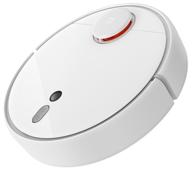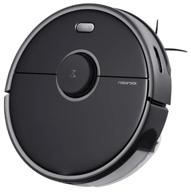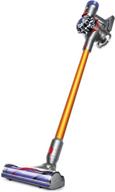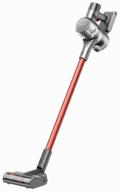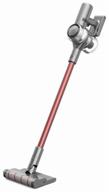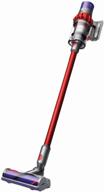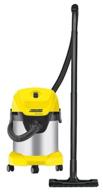
Review on Robot vacuum cleaner Roborock S6/T6, white by Dagmara Grabowska ᠌

A good quality product, I rate this purchase perfectly.
On 35 square meters, the vacuum cleaner spends 18% of the battery and 30 minutes of time. The application has cleaning statistics (how much time was spent in total, how many square meters were cleaned and the number of launches. For 2 weeks, I caught a glitch once - when launched from the application, the charged robot drove off the base by a meter, got a little stupid, said that the cleaning was completed and returned home, when I took it to the room where I wanted to send it, it did the cleaning and then got lost, not could find the base. It didn't happen again. It seems they write that it’s better not to wear it with your hands, you need to use manual control in the application. They say that it is not advisable to set modes higher than "standard" for everyday cleaning - with a clogged filter, there is a risk after some time (anti-record - 30 hours) to get to replace the vacuum cleaner fan, since it has a drawback - the rotor is attracted to the base and starts to rub and melt when overloaded. Therefore, I set myself the "standard" mode and regularly shake out the dust and knock out the filter. On smooth floors (laminate, tiles), the vacuum cleaner does just fine (of course, subject to daily wet cleaning - I’m talking about myself), there are no carpets - I can’t say anything about them. Sometimes the vacuum cleaner moves the chairs and the table, but it does this much less often than my old robot vacuum cleaner. In the MiHome application, you can see a map of the apartment, on which the trajectory of the robot's trip is marked, it is displayed with a delay of ~ 5 seconds. The robot first passes along the contour of the room near the walls and furniture, and then begins to ride in parallel lines over the remaining area, while steering around obstacles, very purposefully. I really don’t like gloss, but it doesn’t play a special role here - the robot almost all the time quietly stands in the corner on the charge and does not catch the eye. I saw advice to treat it a little with antistatic, but I didn’t risk it yet - suddenly the antistatic will damage the lidar or other sensors.
- 1. The quality of cleaning - in comparison with the old robot (and I made a comparison on purpose - first I released the old one, then S6 immediately after it) S6 collected quite a lot of garbage, and after itself when I restarted it did not collect anything - so I did not miss anything. 2. Cleaning speed - copes with the whole apartment in 30 minutes on average (the old one rode until the battery ran out). 3. Noise level - adjustable in 4 steps, on a quiet one, it really is almost inaudible from another room. 4. Ease of maintenance - everything is very easy to disassemble and clean. 5. Wet cleaning mode - if you use it every day, it really becomes easier to breathe, and your feet don’t get dirty (although of course you can’t compare it with a full-fledged scrubbing).
- 1. Only 2.4 GHz Wi-Fi - I would like to have 5 GHz support (in modern homes it is VERY stuffy at 2.4 GHz, so you need either a dual-band router or a separate 2.4 GHz access point for the robot). 2. Small volume of water tank - at maximum flow it is barely enough for 32 square meters. 3. Scheduled cleaning works only if the robot is connected to Wi-Fi - if you turn off the hotspot, cleaning will not be performed. A very sad fact for me, since the old and very stupid robot vacuum did not even have Wi-Fi and navigation, but it ran on a schedule no matter what. 4. ROOT access to the system can only be obtained by disassembling it, there is no software way to corrupt yet (but I do not despair and do not ate the robot's firmware from version 3.5. will only be on old firmware)) - as a geek, it would be very interesting for me to see what this robot has in the brain. However, this does not affect the regular operation of the vacuum cleaner. 5. Glossy top side - covered with dust in 2 weeks and looks a little untidy (exactly like any other glossy surface would look).




